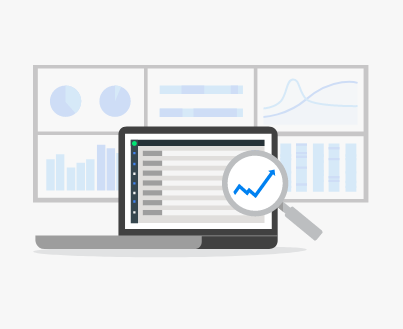 CLOUD
CLOUD
 CLOUD
CLOUD
 CLOUD
CLOUD
Google Inc. wants to make life a little bit easier for developers that work with Kubernetes-based software containers.
The company today is announcing a new tool called Stackdriver Kubernetes Monitoring, which helps to provide a more comprehensive view of the state of applications running in cloud and on-premises environments.
It should be useful for developers who require an easier way to monitor applications running on Kubernetes clusters, Google said. Kubernetes is software that helps to manage software containers more easily. Developers are embracing software containers because they allow them to build their applications once and run them anywhere.
JD Velasquez, a product manager at Google, told SiliconANGLE that Stackdriver Kubernetes Monitoring was built to help developers better understand the behavior of their Kubernetes-based applications. He said developers need to be able to understand things such as the complex system interactions and debug failures, bottlenecks and other abnormal behavior to ensure their apps are always up and running, and doing what they’re supposed to do.
But up until now, doing so has been anything but easy, because developers had to use multiple tools and tap into data from numerous sources to understand Kubernetes behavior properly.
“We’ve heard from many of our customers that they have to stitch together many different tools,” Velasquez said. “They also need to aggregate data from many different sources to get a unified view. We take on the hard toil to make things faster for developers.”
So this is where the new SKM tool, now available in beta, makes life easier. SKM integrates all of the metrics, logs, events and metadata from Kubernetes environments to provide a single, unified view of each application’s health, helping to simplify monitoring and improve overall system reliability.
Velasquez said SKM is useful not only for developers, but also site reliability engineers and security engineers. “As a Site Reliability Engineer, you can easily manage multiple Kubernetes clusters in a single place, regardless of whether they’re running on public or private clouds,” he said. “If you are a security engineer, audit data from your clusters is sent to Stackdriver Logging where you can see all of the current and historical data associated with the Kubernetes deployment to help you analyze and prevent security exposures.”
SKM can be used as a standalone monitoring tool, but it works far better when used in tandem with other Stackdriver products such as Stackdriver Trace or Stackdriver Debugger.
Velasquez said in a blog post that, for example, developers can configure alerting policies using Stackdriver’s multicondition alerting system to figure out issues requiring attention. They can also explore various other metrics via an interactive metrics explorer to pursue hypotheses on issues. “It’s the first time we’ve aggregated all the signals into a single source of truth,” he said.
Developers may also be interested to know that SKM is not only available to Google cloud users. In fact, Google says it can run on any cloud, including rival clouds such as Amazon Web Services Inc.’s, in addition to on-premises environments.
Google said SKM is now available for beta testing in Kubernetes Engine alpha clusters starting today. It will be made available in production clusters when Kubernetes Engine is updated to Kubernetes version 1.10.
Separately, Google is also beefing up container security with the release of an open-source sandboxed container runtime called gVisor, which is designed to provide more secure isolation and is more lightweight than a virtual machine. But although VMs also provide isolation, they also use a huge amount of resources. In contrast, Gvisor uses stripped-down VMs to keep the resource footprint minimal while providing a similar level of container isolation. Those who want to try out gVisor can download it from GitHub.
With reporting from Robert Hof
Support our mission to keep content open and free by engaging with theCUBE community. Join theCUBE’s Alumni Trust Network, where technology leaders connect, share intelligence and create opportunities.
Founded by tech visionaries John Furrier and Dave Vellante, SiliconANGLE Media has built a dynamic ecosystem of industry-leading digital media brands that reach 15+ million elite tech professionals. Our new proprietary theCUBE AI Video Cloud is breaking ground in audience interaction, leveraging theCUBEai.com neural network to help technology companies make data-driven decisions and stay at the forefront of industry conversations.